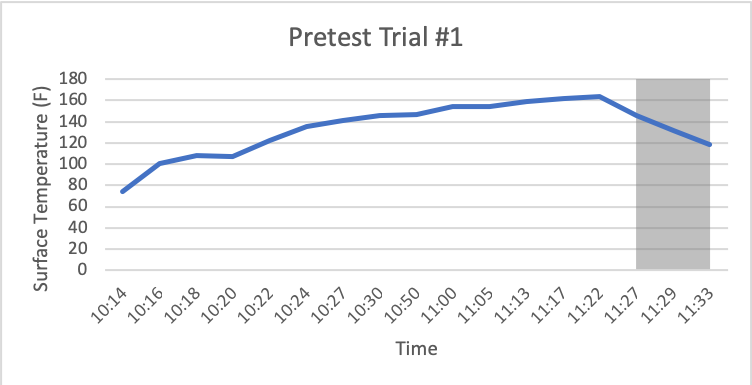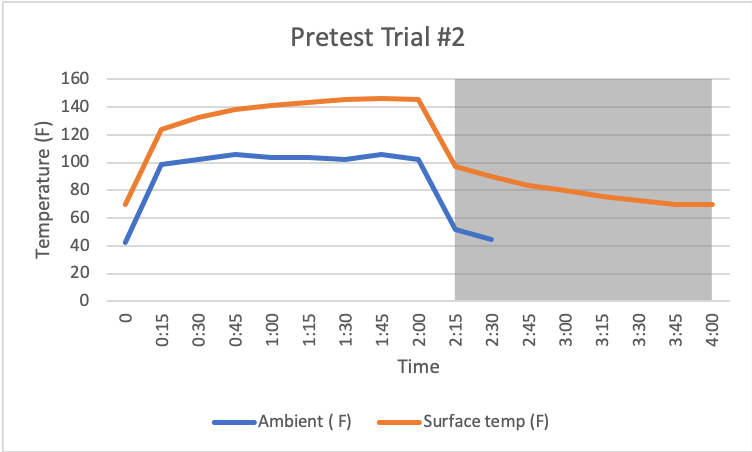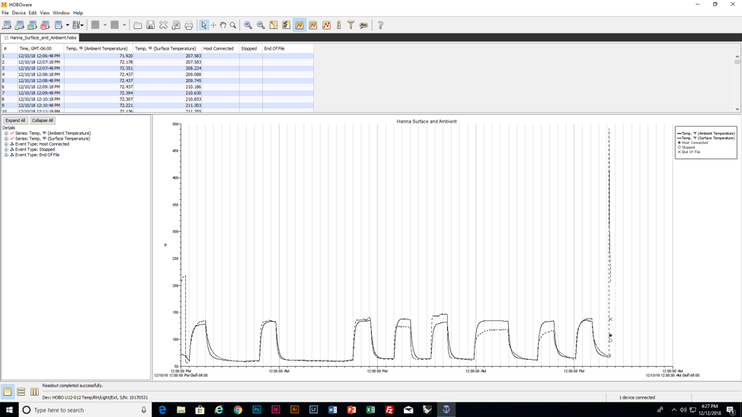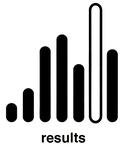Methodology
Questions we are asking:
- Surface temperature: How much heat can the material retain?
- Ambient temperature: How much heat can the material reflect?
Pretest trials were conducted prior to data collection
Pretest Trial #1
Pretest Trial #2
What went wrong?
Heat did not distribute evenly along the sample
Temperature differences in wood don't show in thermocamera
Heat did not distribute evenly along the sample
- hottest in the center
- due to how direct the heat is from the lamp
- data collected was at hottest point in the sample
- same for surface temp
Temperature differences in wood don't show in thermocamera
- there might be a starker contrast in different materials (slate, asphalt, concrete)
What's next?
- Getting HOBO to work
- LCD display burnt out, figure out how to fix
- testing thermocamera with other materials in part 1
- prepping for testing of part 2 and 3 materials
- try to collect any sort of material to test (gravel outside, leaves)
Preconditioning and Controls
- Materials are set in the testing chamber and left to precondition for at least an hour with data collection prior to experimentation.
- All materials will be tested in the same control room in order to avoid influence of external variables
- All data is collected with same equipment (same heat applied over time)
- Note any variations in external factors that may affect experiment
Procedure
- Launch HOBOdata logger and make sure that it is collecting data
- Material set in testing chamber with temperature sensor taped to the surface (note time)
- Take picture with thermocamera (before picture)
- At least an hour later, turn heat lamp on (note time)
- 2 hours later, turn heat lamp off
- Take picture with thermocamera (after picture)
- Leave material in testing chamber for another two hours before removing (note time)
- Switch out material and repeat steps from beginning.







